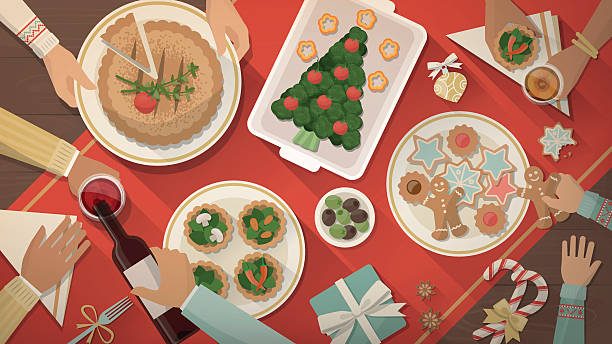Nutriscore, this is how the European scorecard would sabotage Christmas lunchby Antonio Picasso
- 23 December 2021
- Posted by: Competere
- Categories: Empowering Consumers, highlights, News, SUSTAINABLE NUTRITION

If we were to trust the recommendations laid out by Brussels, a good chunk of our eating traditions would be banned and replaced by decidedly less healthy food
A VERY NUTRISCORE CHRISTMAS
Let us imagine a typical Christmas meal, one of those featuring uncles and cousins you haven’t seen all year and who end up staying at your place until six in the evening. We look at the menu with a Nutriscore calculator at hand. A word of introduction for those less familiar with the topic: we are about to dig into what Italians usually eat on Christmas day, checking if tradition can be reconciled with some simple rules for a healthy and balanced diet.
Nutriscore can be a helpful tool in this case. The innovative labelling system uses the all too familiar image of a traffic light to assign to each food item a color – and a go or stop signal – according to the level of sugar, fats and salt contained in 100 grams of product. Intituitively enough, those with a green light are to be preferred over the red light ones.
And so, we sit at the table. Among the starters we have Felino salami and a seasoned ham brought by Uncle Joe. They are both in orange territory and classified with a letter D: Nutriscore is already giving danger signals at the very first course. But it’s Christmas after all, and we are allowed to break a few rules. Especially if Granny spent the entire week making fresh tortellini as if the family was about the size of an army corps. But even tortellini – the kind you cook in some broth and put away for timballo (timbale) the next day – are a Nutriscore D.
OUT WITH THE SECOND COURSES
Here come the second courses. Dad is a pro at bollito misto (boiled meat) and this year he included cotechino because his trusted butcher swore on its deliciousness. Obviously, you’ve got another Nutriscore D right there. On to desserts. This year’s company Christmas gift included torrone and mixed chocolates, double Es. Finally we get to the great dilemma that causes true wars of religion at each Christmas lunch: panettone or pandoro? Doesn’t matter, for Nutriscore they are both Es anyway.
Sure, Christmas might be the day of exceptions, but we can’t afford to consume all this saturated fat. Let’s try to get rid of a few things. Packaged French fries instead of charcuterie, the oily and salty kind we can eat in front of the TV. It’s a win-win: children love them and they are a B according to Nutriscore. Then we could warm up an asparagus lasagna, the pre-cooked ones you find at the corner store. They go straight in the oven while Grandma rests, and they are even a C!
If you are still hungry, you can defrost a good old “Cannibal pizza”, rich in proteins: a nice B. What is the paradox? It’s not just the clearly healthy foods that get a pass with Nutriscore. A bag of fresh salad is obviously an A, but the promotion cum laude of a bizarre, pre-cooked Christmas meal is much more surprising.
THE STRUCTURAL WEAKNESSES OF THE SCORECARD
Indeed, this absurd comparison highlights the structural weaknesses of a tool that, while born out of well-intentioned need to inform consumers about a healthy and balanced diet – was created in a French laboratory and has not found sufficient practical application to receive valid scientific backing.
Our simulation sheds light on more, fundamental, nonsense: thanks to Nutriscore we could give up the iconic Christmas lunch and replace with foods that may be given a pass by the label, but that would be immediately shot down by any dietician. Sure, we could say that Christmas conviviality would be saved by the pleasure of cooking together and sharing traditional meals without giving much thought to colors, traffic lights and waist sizes.
But that is not enough to tackle the root of the problem. Any front-of-pack labelling scheme is useful if it provides consumers with scientifically proven information that are useful to their health. All other points of contention belong to the equally important but distinct realms of economics – which supply and distribution chains lose or gain from Nutriscore? – and of politics – is this a project that France wishes to impose on the rest of Europe? If so, can we stop it? What are the alternatives?
Until the paradigm changes, placing consumers first and relying on medical science and technology – digital apps bring undoubted benefits in this case – to elaborate personalized diets and eating patterns, the war on front-of-pack labels will remain a matter of interests for one government or production sector at the expense of others.
